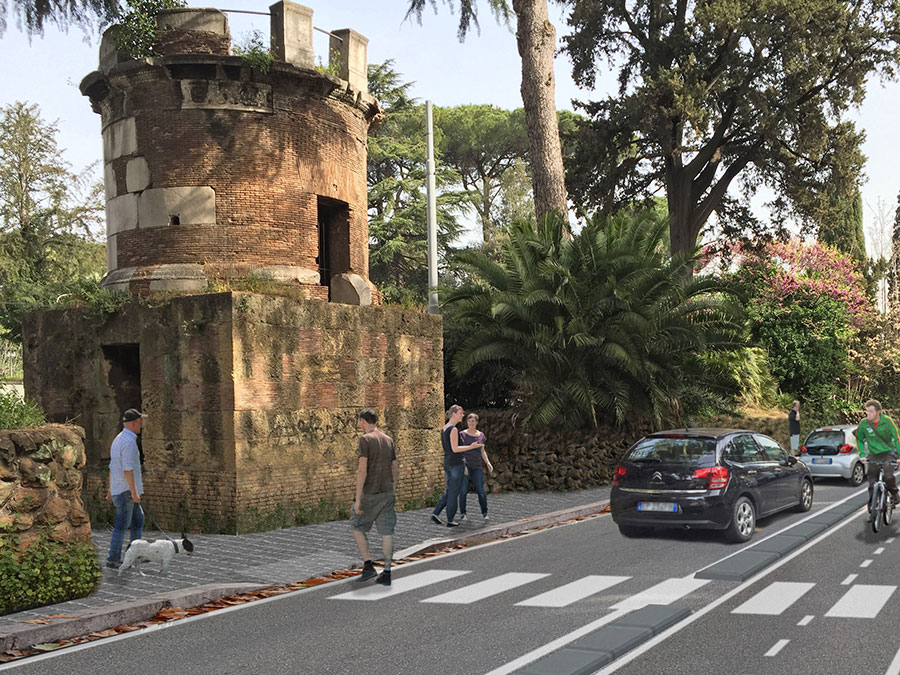The route runs along the right side of Via Nomentana (at the back of Piazzale di Porta Pia) and mainly on the roadway; near the exit for the Nomentana ring road, the itinerary runs on the left side of the consular road, thanks to the cycle crossing of the project and, after crossing the bridge of Batteria Nomentana, it turns on Via Val d'Aosta to continue on and ends on Via Valdarno, connecting to the existing cycle track. This is a "two-way cycle track in its own right" - as defined by the Ministerial Decree 557/99; only some short stretches (in the areas facing the historic villas) the track is instead in a reserved area obtained from the sidewalk. The width is equal to 250 cm and - as required by the regulation - on the roadway it is separated from the car lane by a prefabricated polymer curb, which can be laid in place without excavations, thanks to anchor bolts to the road platform.
The design of the bike route was an opportunity to propose some enhancement and / or redevelopment interventions in the area crossed: for example, in correspondence of the Mausoleum of Tor di Quinto has provided a paving in sanpietrini, intervening on the conditions of degradation of the area in front, the wild parking of cars has been eliminated and a new crosswalk has been inserted to allow access to the area of the Mausoleum.
In Via Valdarno, in view of the presence of schools, specific interventions for the redevelopment of the public space have been proposed: safety of crosswalks, insertion of optical speed limiters, reorganization of parking and placement of racks. The sidewalk, in some sections, has been reconfigured to obtain the seat of the bike path with the displacement of some lighting poles relocated near the new sidewalk edge. The insertion of the bicycle lane has given the possibility to intervene on the heterogeneity of the lighting fixtures, in terms of type and pitch, which currently characterizes Via Nomentana and conflicts with the "unitary" idea of the historical road axis.
With the insertion of the lane, the alignment of the lighting poles, lost in the course of time due to various interventions, was consequently recovered; the displaced street lamps were replaced with new ones in style and, thanks to the support and collaboration with ACEA, the number of street lamps was implemented in order to ensure adequate lighting to the new infrastructure and the street itself.
Finally, the presence of ‘platani’ trees along the bike path has necessarily oriented the design choices. With the aim of limiting interference with the root system of the trees, a new type of kerb has been identified, which does not require excavations for installation and offers great flexibility and speed of execution (prefabricated elements). The most interesting issue is the possibility, offered by the realization of the bicycle lane, to reconstitute - at least in correspondence of the seat of the bicycle lane - the tree-lined Via Nomentana; the project provides for the planting of 54 new trees along the sidewalk affected by the passage of the bicycle lane. This involves both the restoration of plants that had been cut down because they were sick and the insertion of new ones, thus reconstituting the continuity of the tree line.
Finally, an experimental project (Proof Of Concept) is underway on a section of the Nomentana bike lane to count vehicles in transit through the analysis of video acquired by a dedicated camera.


